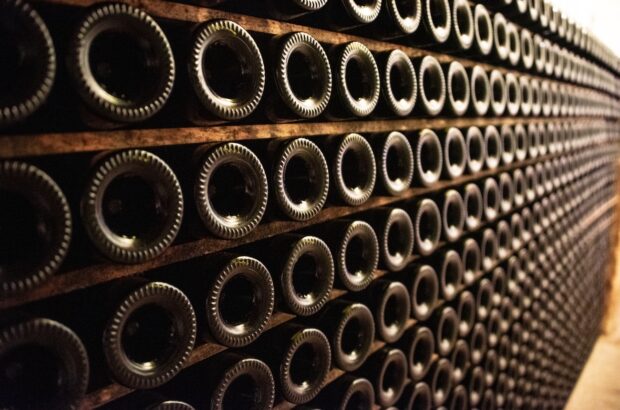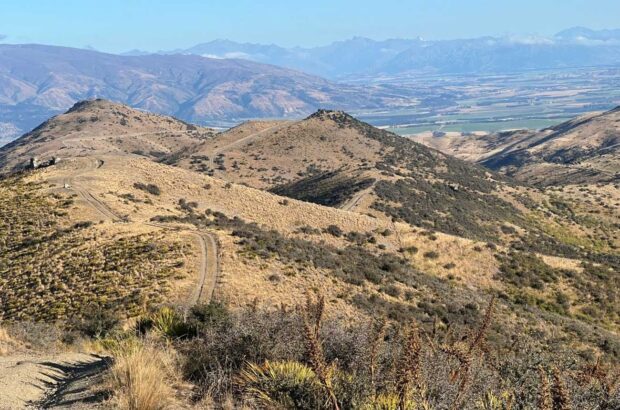Grenache can be a tricky grape variety. While it is slow to ripen and requires a long growing season, it also happens to bloom early, keeping wine-growers waiting seemingly forever. Of Spanish origin, where it’s called Garnacha, its roots were most likely in Aragón in the country’s northeast. The Kingdom of Aragón held dominion over other parts of the world where Grenache has become renowned, including much of the south of France and also in Sardinia, where it is known as Cannonau.
Scroll down for 10 top US-made Grenache wines to seek out
A wine grape with versatility
The grape was very likely planted in California in the late 1850s by Charles Lefranc in the area around San Jose. While Prohibition was tough on all grape varieties, Grenache made a fairly quick return in Post-Prohibition America, owing to its capacity for producing very high yields. The prodigious grape would become part of a number of cheap, sweet rosés in the vein of White Zinfandel, and it was a main ingredient in many of the ubiquitous California jug wines of the 1970s and 80s.
Grenache has existed in almost two separate wine spheres for a very long time.
In addition to being the workhorse variety in the mass production of bottom-shelf wines made around the world, there are high-quality Grenache-based wines of terroir. These come from venerated Old World areas like the Rhône Valley‘s Châteauneuf-du-Pape and Spain’s Priorat. Despite its Spanish heritage, Grenache is rising to prominence in the US via a French connection. Since 1989, the Paso Robles winery Tablas Creek has worked with its French partner, Château de Beaucastel. Its nursery programme is largely responsible for the quality Grenache vines planted throughout California, Southern Oregon and Washington.

Tablas Creek Vineyard. Credit: Tablas Creek
A variety on the rise
In the US, Rhône varietals have often taken a back seat to the cachet of Cabernet Sauvignon or the cult-like appreciation for Pinot Noir. Recently, though, thanks to some of the country’s most talented producers who have demonstrated a real commitment to grapes like Grenache and Syrah, some of the most compelling wines have been coming out of places such as Washington’s Red Mountain and California’s Paso Robles and Santa Barbara County.
‘I think Grenache has incredible potential here in Paso and in California more generally,’ says Jason Haas of Tablas Creek. ‘It gets lovely fruit, and it maintains its acids beautifully. Grenache is actually pretty easy to grow, and the vines are quite productive. You can use it in a blend or as a varietal wine. It’s become very popular for rosés here in California. And as evidence, despite significant planting in the last 15 years and the fact that it’s such a generous producer, it’s still one of the harder and more expensive components to source for our Patelin (blended) wines each year.’
In Sonoma County, at places like Rossi Ranch vineyard and Nuns Canyon, producers and growers are getting serious about Grenache. John Hamel of Hamel Family Wines is betting big on the variety. Hamel is making a Grenache in Sonoma County with only 13% abv, a fresh and very bright bottling. ‘Grenache allows us to explore the finesse and tension of our volcanic terroir,’ says Hamel. ‘In Grenache, we find an elegant, transparent expression fragrant of and textured by the iron-rich basalt stones that underlie our vineyards.’

Nuns Canyon Vineyard. Credit: Hamel Family Wines
A ‘special place’ in Washington
Grenache goes back in Washington’s wine industry to the early days of Chateau Ste. Michelle – the state’s founding producer made a Grenache-based rosé. The vast majority of Washington State’s vineyards grow in desert conditions on the eastern side of the Cascade mountain range. Grenache is both drought and heat-tolerant and so would seem a perfect candidate for Washington viticulture.
Matt Walls, contributing editor for Decanter, recently reviewed several Grenache wines from around the world, with some from Oregon’s Walla Walla Valley scoring among the highest tasted.
Chris Peterson has made wine in Washington for many years now and is currently the winemaker for both Avennia and Liminal. The Liminal brand makes wine from one vineyard, WeatherEye, which sits at the very top of Red Mountain. ‘I think Grenache works in Washington in many ways,’ says Peterson. Some people are making pleasant, lighter-coloured, fruit-driven wines to be enjoyed in the shorter term. In much of the Yakima Valley, the rich soils and more moderate temperatures encourage this style.’
The interesting aspect to me, though, is trying to make Grenache with a little more concentration and complexity. These sites are rather rare, in my opinion. Still, hopefully, we’ll see a proliferation of them as vines age and growers continue to learn the intricacies and challenges of the variety.’
‘I still believe that other than the rare exception, Grenache is better off in a blend,’ Peterson continues. ‘I think this is true for all but the finest sites in the world, which brings me to WeatherEye. At this vineyard, they have taken Grenache to another level in Washington state.’
‘A combination of careful clone selection, poor soils, and sometimes harsh, challenging growing conditions have resulted in Grenache with a lot more colour, concentration, and complexity. We still use most blocks as part of our GSM blend. But at the amphitheatre-like High Canyon block at the top of the vineyard, I believe Grenache has reached a pinnacle to merit a single vineyard block, single variety designation. The flavours have all the complexity and completeness on the palate to cover all the bases of a classic wine. All 70 cases of it.’







